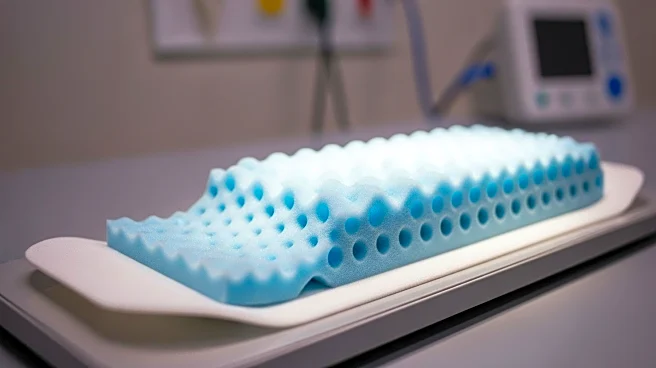What's Happening?
Tosoh Bioscience, Inc., a leader in clinical diagnostics, has received FDA 510(k) clearance for its new HbA1c testing system, the Tosoh Automated Glycohemoglobin Analyzer HLC®723-GR01. This next-generation analyzer is designed to monitor long-term blood glucose control in individuals with diabetes, aiding in diagnosis and risk identification. The GR01 utilizes Tosoh's proprietary non-porous ion exchange HPLC column technology, delivering precise A1c results in just 50 seconds and detecting common hemoglobin variants. The system is suitable for mid to high volume laboratories, offering high throughput without the complexity of larger analyzers. It features automatic buffer change, walkaway operation, and user-friendly capabilities, integrating seamlessly with Laboratory Information Systems.
Why It's Important?
The FDA clearance of the GR01 analyzer is significant for diabetes management in the U.S., providing clinicians with a reliable tool for accurate and efficient A1c testing. This advancement supports better diagnosis and management of diabetes, potentially improving patient outcomes. The analyzer's speed and precision can enhance laboratory workflows, reducing time and labor costs. As diabetes remains a major health concern, innovations like the GR01 can play a crucial role in public health by facilitating early detection and effective monitoring of the disease.
What's Next?
With the FDA clearance, Tosoh Bioscience is poised to distribute the GR01 analyzer across the U.S., potentially transforming diabetes testing in clinical settings. Laboratories may begin integrating this technology to improve their diagnostic capabilities. The company is expected to continue its legacy of developing advanced diagnostic systems, potentially expanding its market presence and contributing to the evolution of diabetes care.
Beyond the Headlines
The introduction of the GR01 analyzer may influence the broader healthcare industry by setting new standards for diagnostic precision and efficiency. It could prompt competitors to innovate similar technologies, driving advancements in diabetes testing. Additionally, the system's user-friendly design and integration capabilities may encourage more widespread adoption of automated diagnostic tools, impacting laboratory operations and patient care strategies.










